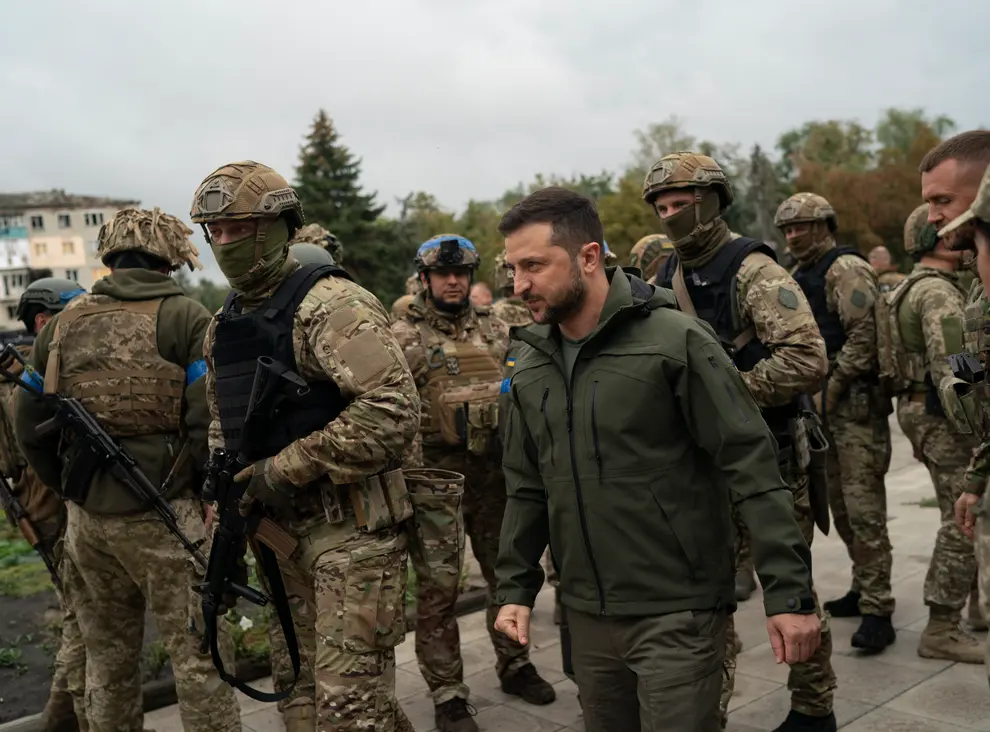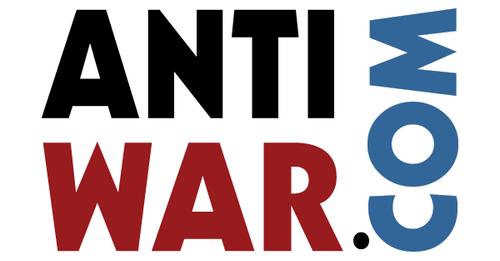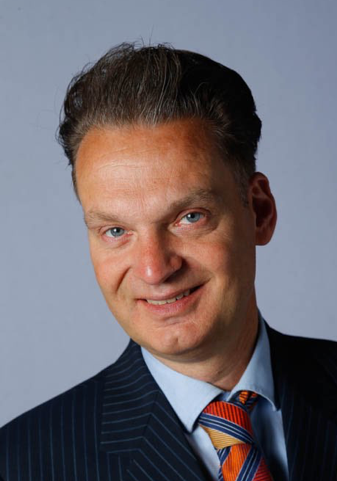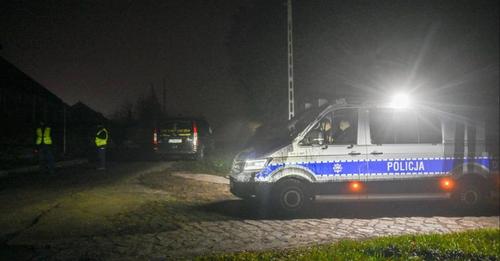
Jan Oberg of the Transnational Foundation joins Ray
December 10, 2022 (21 minutes)
http://www.urmedium.com/c/presstv/120475


Jan Oberg of the Transnational Foundation joins Ray
December 10, 2022 (21 minutes)
http://www.urmedium.com/c/presstv/120475
Comments also on Putin’s Broad Hint on Ukraine Negotiations
Interview by Nima Rostami Alkhorshid (Brazil), December 8, 2022

We need to talk about why Russia invaded Ukraine
Without this debate, there can be no understanding of what will be needed for a lasting peace
By Mary Dejevsky, December 8, 2022
https://www.independent.co.uk/independentpremium/voices/ukraine-russia-war-west-nato-b2241256.html
Those who view Russia as an inherently aggressive, imperialist state insist that Russia must be defeated and made to recognise the error of its ways
There have been many times over the past 10 months when it has seemed an almost indecent luxury to turn away from the harrowing realities of the Ukraine war to contemplate some of the wider questions thrown up by the conflict. The rights and wrongs are so clear: Russia mounted a military invasion of a sovereign country in an attempt to bend it forcibly to its will. It has broken every rule of the international order; it is the aggressor. What more is there to say?
Quite a lot, I would submit. For while there is general agreement about what has happened, and how, there are two quite different, even opposite, views about why.
The first is the view that has dominated what might be called the Western political and media mainstream since the Russians invaded Ukraine on 24 February this year. According to this, the war is a war of aggression. Russia is by its very nature an imperialist power, and its objective is to restore if not the Soviet Union, then the Russia empire. Some pin the blame primarily on Putin, saying the invasion was born of his obsessional belief that Ukraine has always been, and should remain, a (subordinate) part of Russia. Others say it is less about the leader than the country.
But the conclusions drawn are the same. First, there can be no sensible dealings with Russia until either Putin falls or Moscow “changes its behaviour”. And, second, the countries of East and central Europe have been vindicated: they were right to see Russia as a threat, and they were right in their determination to join Nato to protect themselves. Had Ukraine been afforded similar protection, this war might not have happened.
The other view is almost the mirror image, but it has been heard far less than the first. According to this, Russia’s war on Ukraine is at its root defensive and was launched against what Moscow saw as a growing – and mortal – threat to its security. Russia felt weakened after the 1991 Soviet collapse. It had stood by through the 1990s and early 2000s, as the former Warsaw Pact countries and the Baltic states joined the Western alliance. But now Ukraine was being groomed by the US (and the UK) to the point where it was de facto, if not – yet – de jure, a Nato member, too.
Over the years, Russia had pleaded for some overall European security arrangements, only to be ignored or rebuffed (most recently in December 2021). The next stage could only be US heavy weapons stationed in Ukraine and Nato poised for an attack either on Russia or on its “regime”. Fearful for its own security, Russia judged it had to pounce before intent became fact.
This second view, which sees actions by the West as a major, even decisive, factor pushing Russia to war has recently found expression in a concise and elegant little book – scarcely more than a pamphlet, in fact – with the title How the West Brought War to Ukraine (Siland Press, 2022). Written by Benjamin Abelow, an American with a medical and research background who used to work in Washington on nuclear arms issues, it seems to have struck a chord, especially in those parts of Europe where public debate on the origins of this war has been minimal, to say the least.
What Abelow does, in a succinct 70 pages, is set the war in its wider historical context, enumerate the actions on the Western side that preceded Russia’s invasion, and explain how they might have been seen in Moscow. He also highlights the early alarms sounded by US statesmen to the effect that the advance of Nato to Russia’s borders could lead to war – not, note, to heightened tensions, but to actual war.
They included Henry Kissinger; the late diplomat and Russia-watcher George Kennan; Jack Matlock, who served as US ambassador in Moscow as the Soviet Union collapsed; and – interestingly – another former US ambassador in Moscow, now director of the CIA, William Burns, who is one of very few US officials to have met his Russian opposite number since the start of the war. This is hardly a lightweight line-up. But their advice was spurned – in part, it seems, because of a consensus that any Russian reaction could be deterred.
Abelow looks at what he calls “Western provocations”, which include post-Cold War triumphalism, the green light for former East bloc states to join Nato despite what Russia understood to have been promises to the contrary, the 2014 ousting of Ukraine’s democratically elected president – which Russia saw as a US-inspired coup – and the ways the West subsequently drew Ukraine into the Western bloc, with the EU association agreement and Nato military assistance, even as it abrogated Cold War arms control treaties one after one, or allowed them to lapse.
In one chapter, Abelow turns the tables and looks hypothetically at how the US might have responded – in the light of its still sacrosanct Monroe doctrine – to equivalent activity by Moscow in the vicinity of the United States. Lastly, he considers how, if the West had made different decisions at key stages, the war in Ukraine could have been avoided. And he squares the circle.
Both constituencies can claim vindication from what has happened. Those who always saw Russia as a threat can say the invasion proves them right, while those who see the invasion as primarily defensive can hold the eastward advance of Nato to blame. And so the argument goes on.
Except that, since the early days of the war, when there seemed a genuine desire among Western policy-makers and the media to understand why it had happened, an argument has hardly been had. Indeed, I would go further. The argument set out by Abelow, which is largely my view, too, has been effectively relegated to the margins by the powers that be on both sides of the Atlantic. Its proponents have been deprived of platforms, dismissed as deluded and slurred as Kremlin apologists, even traitors.
At which point, you might ask whether it really matters that there are quite contrary views of Russia’s action. Surely, the imperative now is to help Ukraine to survive as an independent state. But it does matter because without understanding why Russia invaded, there can be no understanding of what will be needed for a lasting peace.
Those who view Russia as an inherently aggressive, imperialist state insist that Russia must be defeated and made to recognise the error of its ways. Otherwise, the whole of Europe, starting with the Baltic states and Poland will be at risk. Their parallels are with Nazi Germany and the Second World War, which is how those who have advocated peace talks (myself included) come to be branded “appeasers”.
If, on the other hand, you take the view that the war reflects Russia’s fears of its own weakness vis a vis the West and the loss of its last buffer as Nato moves east – weakness, incidentally, amply demonstrated on the battlefield – then the conclusion to be drawn is quite different. You will argue that demanding total defeat or regime change in Moscow (as some US officials have done) will end nothing, and only scare Russia into becoming more dangerous. Indeed, you might add that the belligerent warnings issued by the West late last year in the name of deterrence actually had the reverse effect.
Some will say that even voicing such an argument amounts to selling out Ukraine. But the contrary is true. The survival of Ukraine as a sovereign independent state is what we all want. But there is no point in the West underwriting Ukraine’s survival – which is what the US, Nato and the EU are necessarily committed to from now on – without acknowledging Russia’s need for security, too.
Only when Russia feels safe within its post-Soviet borders will its neighbours also be secure within theirs. What is required to that end are new security arrangements for the whole of Europe, probably underpinned by that old staple of arms control. Until then, there can be no lasting peace in Europe, and the threat of new conflicts, even nuclear conflicts, will persist.
Mary Dejevsky is an Independent columnist on foreign affairs, having previously been the title’s foreign correspondent in Moscow, Paris and Washington. She has written about the collapse of communism from inside Moscow, the dissolution of the Soviet Union, the Iraq War and is a key authority on Russian politics, and on diplomatic relations between the Kremlin and the west.
December 7, 2022
Here is link to first segment (36 min.)

By Ray McGovern, December 5, 2022
https://original.antiwar.com/mcgovern/2022/12/04/americans-dumbed-down-on-russia/

By Ray McGovern, Nov. 22, 2022
| What follows is from Dutch investigative journalist Eric van de Beek, who has covered Dutch involvement in the MH17 coverup like a junkyard dog – in the tradition of the late Robert Parry. Bob also wrote extensively about the MH17 charade on Consortium News, the website he founded. Here are van de Beek’s remarks; they are well worth adding to the information he provided yesterday: Most Dutch people have been led to believe that the original U.S satellite imagery had been available to the prosecutor and court before last week’s court proceeding that ended up imposing life sentences (in absentia) on two Russians and one pro-Russian Ukrainian. In reality, the satellite imagery had not been made available, as anyone who listened carefully to what was said in court should have known. The lawyers for Pulatov (who was not convicted) talked about the imagery in extenso on June 22, 2020. The true story about the satellite imagery is that someone from the Dutch Military Intelligence Service (MIVD) received a classified report from the DNI (U.S. Director of National Intelligence) about what the satellite imagery showed, not the imagery itself. This was reported to the Prosecution Service and was included in the case file. In sum, neither the Prosecution nor the court received the actual satellite imagery from the U.S. It gets worse. The intercepts from Ukrainian intelligence weren’t “meticulously vetted and assessed untampered with” as claimed. Just the opposite. The Prosecution refused to answer the question of Pulatov’s lawyers regarding whether the audio files were authentic. On November 1, 2021 the court made known that the Prosecution had never ordered any technical research on the files. I was flabbergasted when I heard this, but the Dutch media kept silent. The reason given was that the Dutch Nation Forensic Institute was not able to perform this kind of technical research. They claimed they had no certified specialist in the house! Also on November 1, 2021, the court made known that they had asked the National Forensic Institute of Lithuania to assess 14 Pulatov intercepts. That Institute found these were not the original audio files! Moreover, no one checked on voice cloning; lack of the tools to do so was the explanation given. The Prosecution presented three photographs and six videos of a Buk Telar, which is a transporter-erector-launcher-and-radar for the Buk missile.) It claimed that all imagery was taken in rebel-held territory on 17 July. The Telar was identified by a Dutch police officer as a Russian Telar. There are many issues with these photos and videos. (It is not without reason that I dedicated a full chapter to this in my book.) None of this imagery was published before the shoot-down, and in almost all cases the photographers are unknown. The Joint Investigation Team seems to have received only two files physically, on two Secure Digital cards. The others were downloads from social media or file transfer services. Even the files on the SD cards, which include a dashcam video, have serious issues. For example, the dashcam video contains a 2012 timestamp. According to the person who filmed from his car this was due to a malfunctioning battery. Police officers of the JIT then asked him if he remembered when he shot the video. He said this must have been somewhere in July, a few days before he heard about the crash. Despite that testimony, the Prosecution claimed the video was shot on 17 July 2014, the day of the shoot-down. |

Loyal Dutch convict 3 for downing MH17 DESPITE US REFUSAL to substantiate Sec. Kerry’s claim: “We picked up the imagery of this launch; know the trajectory, where it came from, the timing; was exactly at the time this aircraft disappeared from the radar.”
https://consortiumnews.com/2016/01/21/kerry-pressed-for-mh-17-evidence/

Saner souls in US prevail for once on Ukraine; defy attempt by Poles, Brits, & US Neocons to blame Russia for missile “attack” on Poland; was UKRAINIAN air defense missile landed just inside Poland
https://ft.com/content/5dd657b6-f5f2-4de9-aa75-a7e86605f9e7?emailId=6a4091ba-bf77-4e72-9900-7b045d349238&segmentId=13b7e341-ed02-2b53-e8c0-d9cb59be8b3b
Whew! Major escalation can be just one “false flag” away.